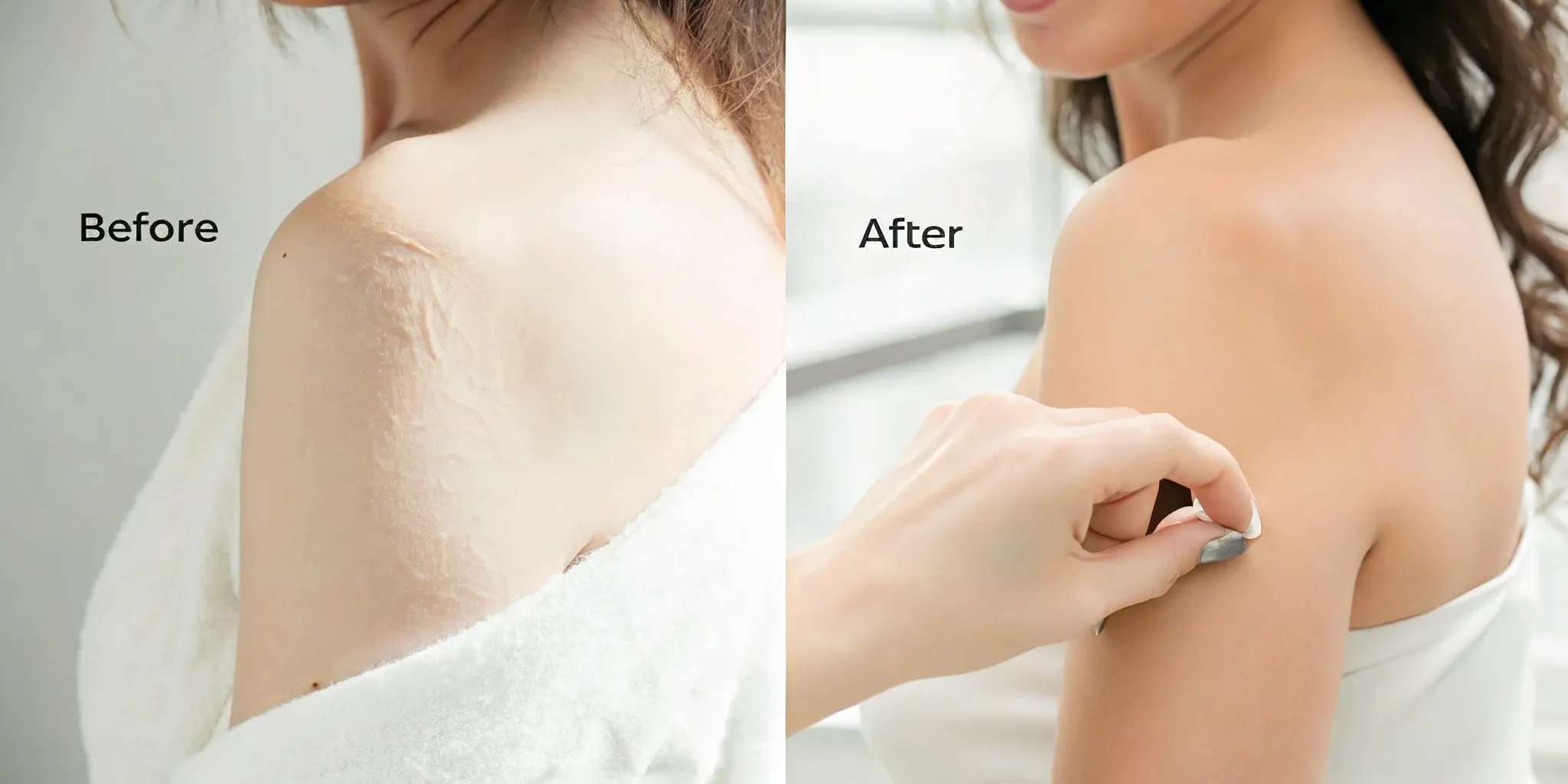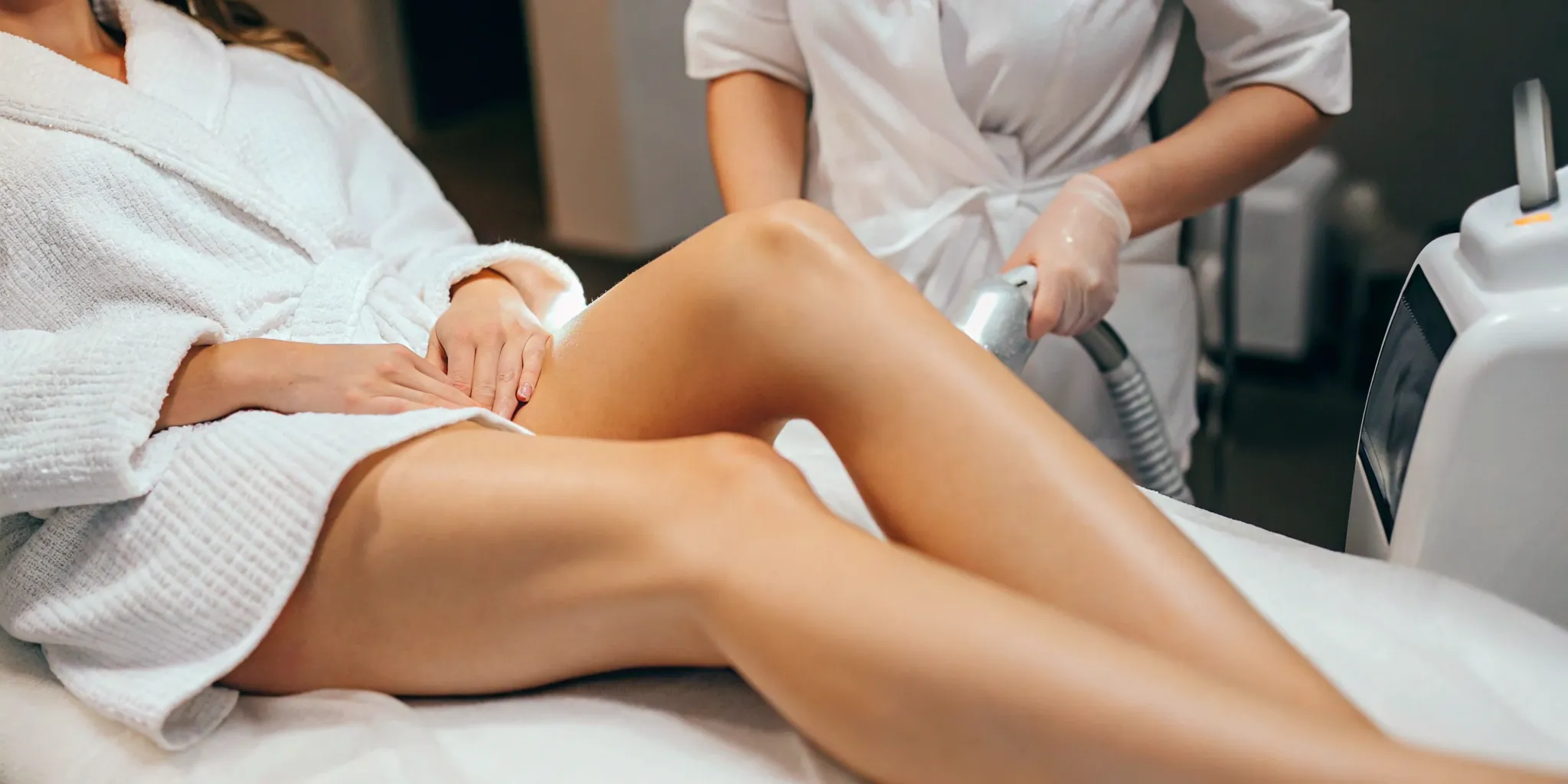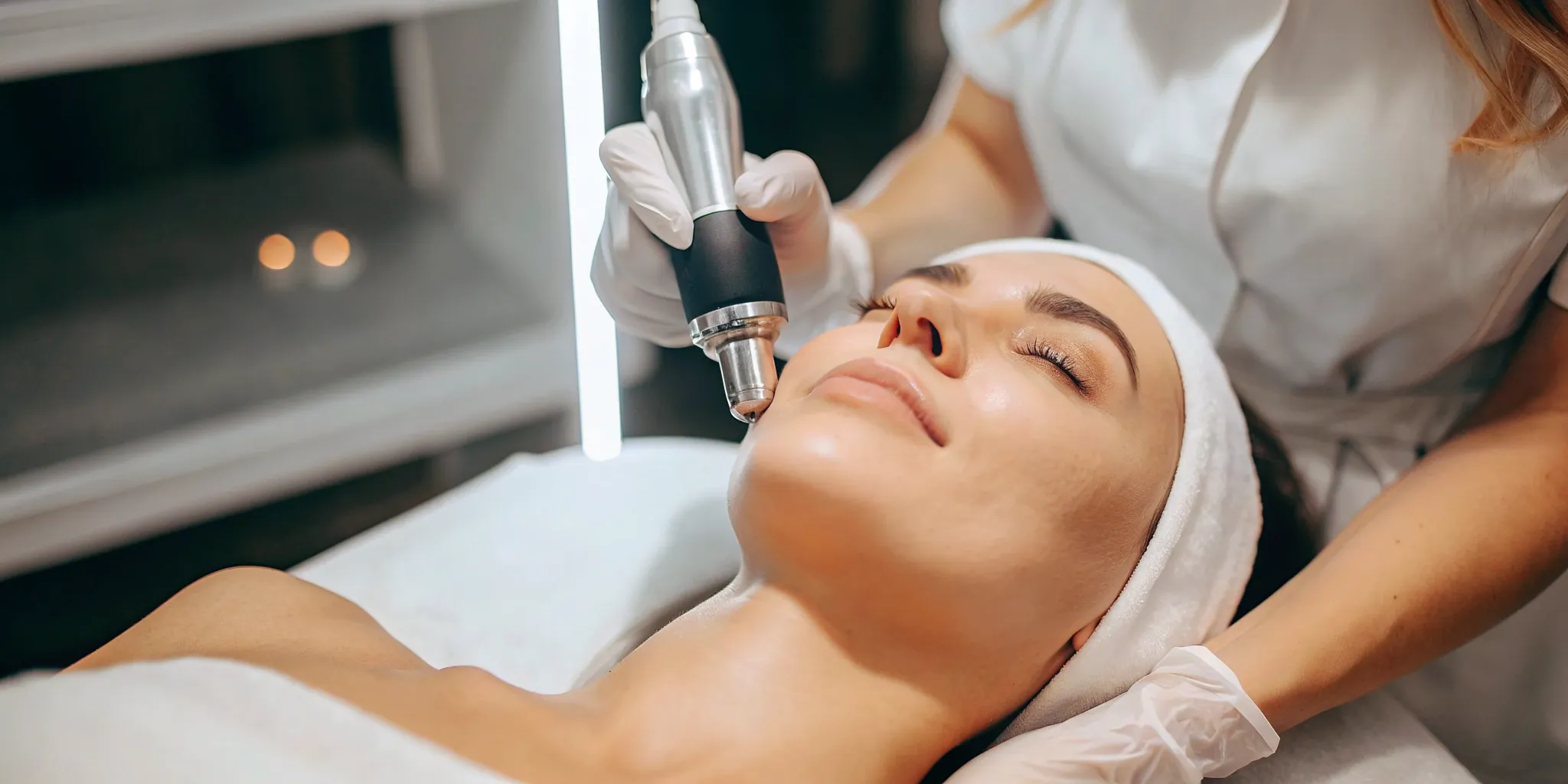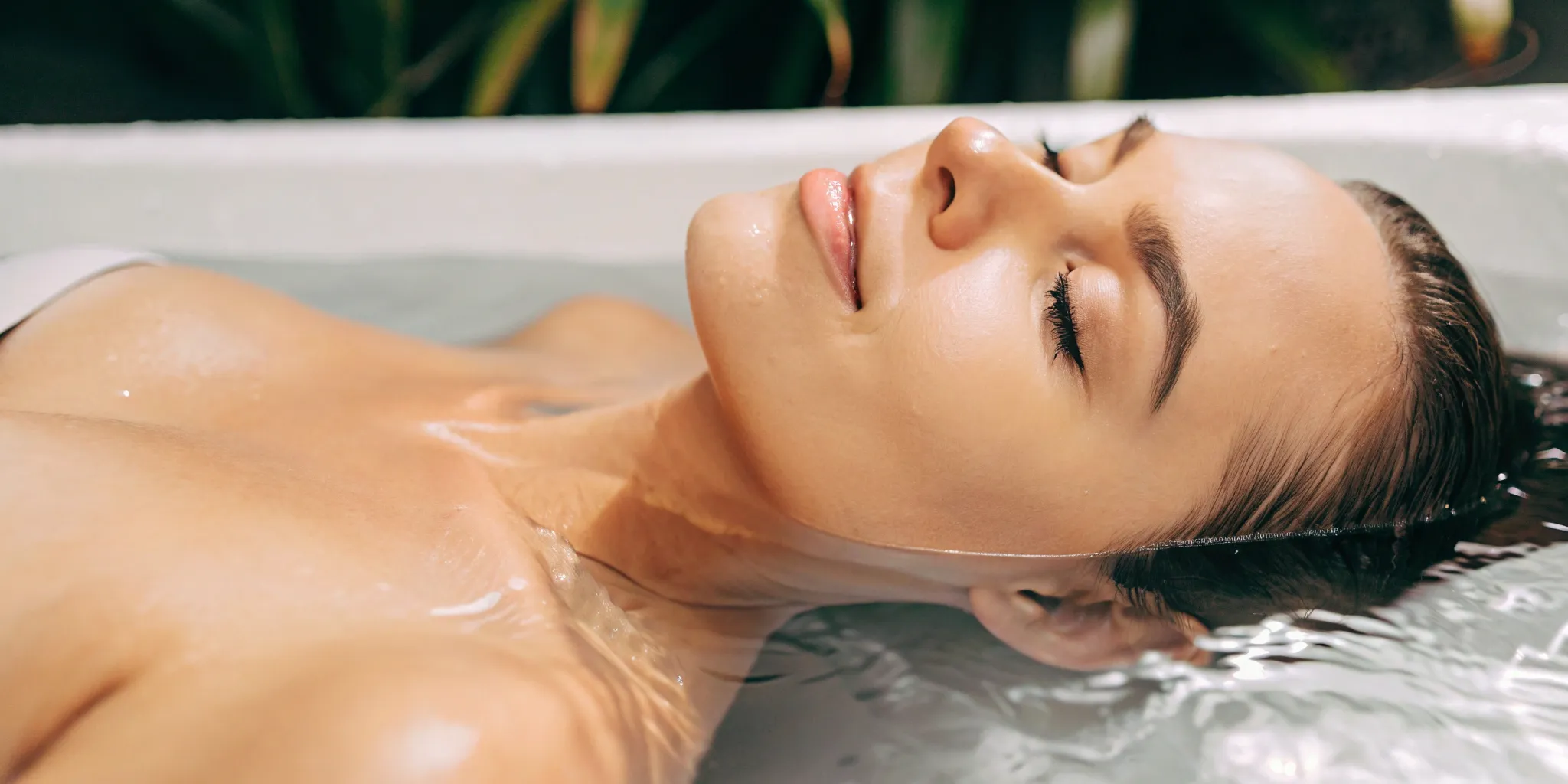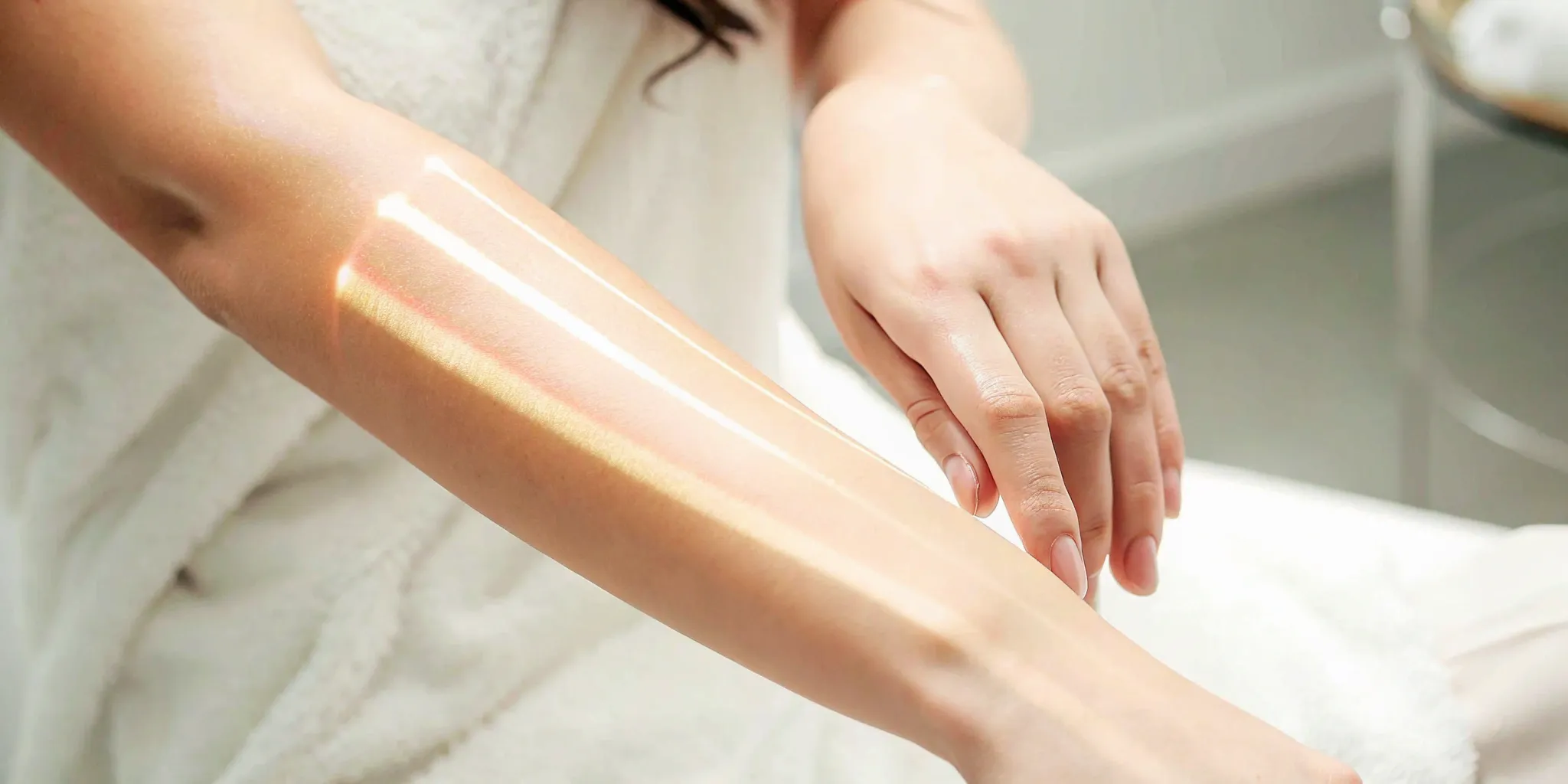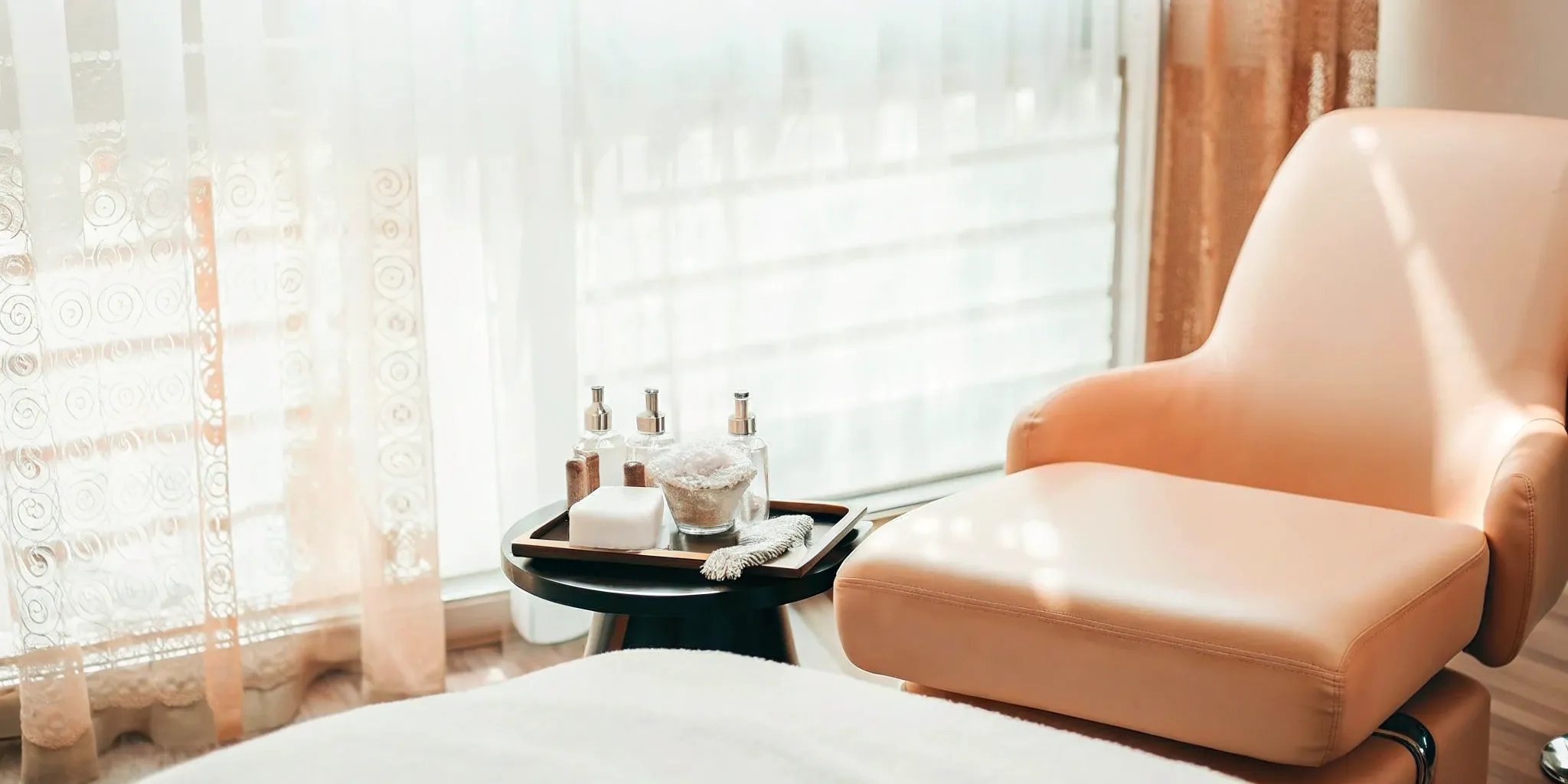If you’ve ever found yourself choosing outfits to hide your legs or meticulously applying concealer to cover facial veins, you know how frustrating visible spider or varicose veins can be. You want a solution that works—one that doesn’t involve invasive surgery or endless downtime. This is where modern aesthetic technology shines. A laser vein treatment is a minimally invasive procedure that uses focused light to safely and effectively make unwanted veins fade from view. It’s a precise and reliable method that targets the problem at its source, allowing your body to naturally clear the treated veins. This guide will walk you through exactly how it works, what to expect during the process, and the beautiful, long-lasting results you can achieve.
Key Takeaways
- Not All Laser Treatments Are the Same: The best approach depends on your specific needs. Simple laser treatments work on the surface for small spider veins, while Endovenous Laser Treatment (EVLT) targets the larger, deeper varicose veins from within for a more lasting solution.
- Expect a Quick Procedure and an Easy Recovery: The treatment itself often takes less than an hour, and you can get back to your daily activities right away. Following simple aftercare, like wearing compression stockings, helps ensure a smooth healing process with very little disruption to your life.
- Choosing the Right Specialist Is Crucial: The success of your treatment hinges on the expertise of your provider. Use your consultation to ask questions about their experience, the technology they use, and the expected costs to feel confident in your decision.
What Is Laser Vein Treatment?
If you’ve ever felt self-conscious about spider veins or varicose veins, you’ve probably wished for a magic wand to make them disappear. Laser vein treatment is the closest thing we have. It’s a modern, minimally invasive procedure that uses focused light to safely and effectively get rid of unwanted veins. The laser sends a strong beam of light into the vein, which generates heat. This heat intentionally damages the vein wall, causing it to collapse and seal shut. Once closed, blood can no longer flow through it, and your body naturally absorbs the treated vein over time, leaving you with clearer, smoother-looking skin. It’s one of the most popular aesthetic services for a reason—it delivers real results.
How the Technology Works
At its core, laser vein treatment is a highly targeted solution for a common problem called superficial venous reflux. That’s just a technical way of saying that blood is flowing backward in the veins close to your skin’s surface, causing them to bulge and become visible. The technology, often called Endovenous Laser Treatment (EVLT), uses a precise laser fiber to deliver heat directly inside the faulty vein. This controlled energy closes the vein from the inside out, rerouting blood flow to healthier veins deeper in the leg. It’s an incredibly effective way to address the root cause of varicose veins, not just their appearance, giving you a lasting solution.
What Types of Veins Can Be Treated?
Laser vein treatment is versatile, but it’s especially effective for larger, more prominent varicose veins—the kind that often appear as bulging, rope-like lines on the legs. This procedure is the gold standard for treating the underlying saphenous veins that cause these issues. While simpler surface laser treatments can work for tiny spider veins, endovenous laser treatment is designed for the bigger, deeper veins that can cause discomfort and are more noticeable. The best way to know what’s right for you is to have a specialist assess your specific concerns. We can help you create a personalized plan during a private consultation.
The Step-by-Step Process
The thought of a laser procedure might sound intense, but the process is surprisingly straightforward and typically takes less than an hour. First, the treatment area is numbed, so you’ll remain comfortable. Your specialist will use an ultrasound to get a clear view of the vein being treated. After making a tiny incision, a very thin tube containing the laser fiber is gently inserted into the vein. As the fiber is slowly withdrawn, it emits laser energy, heating and sealing the vein shut. You’ll be able to walk out right after your appointment and get back to your day with minimal downtime.
How Lasers Target and Treat Veins
Laser vein treatment is a precise science. Instead of invasive surgery, this technique uses focused light energy to make unwanted veins disappear without damaging the surrounding skin. The core idea is to deliver a controlled amount of heat directly into the problematic vein, causing it to close down and fade away. Your body then naturally redirects blood flow to healthier veins nearby. It’s a sophisticated approach that allows us to target everything from tiny spider veins to larger varicose veins with incredible accuracy.
The Role of Laser Wavelengths
At the heart of the treatment is a highly focused beam of light calibrated to a specific wavelength. This light is designed to be absorbed by the pigment in your red blood cells. When the light energy hits the blood, it instantly converts to heat, which gently damages the vein walls and causes them to collapse. Over the following weeks, your body’s natural healing process takes over, absorbing the treated vein until it’s no longer visible. This method is incredibly precise, leaving the surrounding tissue untouched.
Using Ultrasound for Pinpoint Accuracy
For deeper veins that aren’t visible on the skin’s surface, we need to see exactly where we’re going. This is where ultrasound technology comes in. Before the treatment, your specialist will use an ultrasound device to map out the veins beneath your skin, giving us a clear, real-time picture of the vein’s path. During the procedure, we continue to use ultrasound to guide the thin laser fiber directly into the targeted vein. This ensures the laser energy is delivered with pinpoint accuracy, maximizing effectiveness and safety.
How Heat Closes the Vein
Once the laser fiber is perfectly positioned, it delivers quick pulses of light energy, generating heat that causes the vein walls to shrink and close. As your specialist slowly withdraws the fiber, the entire length of the problematic vein is sealed shut. This process is especially effective for treating conditions like superficial venous reflux, where faulty valves cause blood to pool in the vein. By closing the vein, we stop the reflux at its source. Your body then reroutes blood to healthy veins, and the treated vein gradually fades away.
What to Expect: Your Treatment, Step by Step
Thinking about any medical procedure can feel a little intimidating, but knowing exactly what’s coming can make all the difference. We believe in total transparency, so you feel confident and comfortable from your very first conversation with us to your final results. Let’s walk through the entire laser vein treatment process together, step by step. This way, you’ll know precisely what to expect and can focus on the exciting outcome: smoother, clearer-looking skin.
From the initial chat to the treatment itself and aftercare, we want you to feel empowered and informed. This isn’t just about the technology; it’s about your comfort and your results. We’ll cover how to prepare for your appointment, what happens during the procedure, and how we make sure you’re comfortable throughout. Understanding these details helps demystify the process and allows you to approach your treatment day with ease. The journey begins with a simple chat to see if this treatment is the right fit for you. When you’re ready, the first step is to schedule a consultation with one of our specialists. We’ll answer all your questions and create a personalized plan tailored to your specific goals and needs. Our team is here to support you every step of the way, ensuring your experience is as seamless and positive as possible.
Your First Consultation
Your journey starts with a one-on-one consultation. This is our chance to get to know you and your goals, and your opportunity to ask us anything. We’ll review your medical history and talk through the treatment in detail, explaining how it works and what results you can expect. You’ll also sign a consent form, confirming you understand the procedure. This initial meeting is all about making sure you feel fully informed and confident in your decision. We’ll work with you to create a personalized treatment plan from our wide range of aesthetic services to best suit your needs.
How to Prepare for Your Appointment
A little preparation helps ensure your treatment goes as smoothly as possible. During your consultation, we’ll give you a specific set of instructions, but some general guidelines are helpful to know. It’s important to tell your doctor about any medications you take, especially blood thinners like aspirin or ibuprofen, as you may need to pause them briefly. You should also let us know about any allergies you have, whether to medicines, latex, or anything else. Following these simple steps helps us provide the safest, most effective care.
What Happens During the Treatment
On the day of your treatment, we’ll get you settled comfortably in the treatment room. Your specialist will make a tiny incision near the targeted vein and insert a very thin catheter containing a laser fiber. As the catheter is gently guided out, the laser delivers controlled heat directly to the vein wall. This heat causes the vein to close and seal shut. The entire process is precise and targeted, leaving the surrounding tissue unaffected. Your body then naturally reroutes blood flow to healthier veins.
Keeping You Comfortable
Your comfort is our top priority. Before the procedure begins, we’ll apply a local anesthetic to numb the treatment area, so you’ll feel little to no discomfort. For some patients, we might also offer a light medicine to help you relax. The treatment itself is surprisingly quick, often taking less than an hour to complete. Because it’s a minimally invasive procedure, there’s no need for a hospital stay. You’ll be able to head home shortly after your session is finished and get back to your day with just a few aftercare instructions to follow.
What Are the Different Types of Laser Vein Treatments?
Not all visible veins are created equal, so it makes sense that there isn’t a one-size-fits-all laser treatment. The right approach depends entirely on the type, size, and location of the veins you want to address. Generally, treatments fall into two main categories: one for smaller, surface-level veins and another for larger, deeper ones. Understanding the difference is the first step in figuring out which path is right for you.
An experienced specialist will assess your specific situation to recommend the most effective treatment plan. Let’s walk through the two primary types of laser vein therapy so you can feel more prepared for your consultation.
Simple Laser Treatment for Surface Veins
If you’re bothered by fine spider veins or tiny varicose veins that sit just under the skin, a simple laser treatment is likely the best option. This procedure is completely non-invasive, meaning the laser works from the outside of your skin to send gentle bursts of light into the vein. The heat from the laser damages the vein, causing it to collapse and eventually fade from view. Because these treatments are targeting smaller, more delicate veins, you might need a few sessions to achieve your desired results. These appointments are typically scheduled several weeks apart to give your skin and veins time to heal and respond. It’s a straightforward and popular choice for cosmetic concerns on the face and legs.
Endovenous Laser Treatment (EVLT) for Deeper Veins
For larger, more prominent varicose veins, especially those in the legs, a more intensive method called Endovenous Laser Treatment (EVLT) is used. This minimally invasive procedure is incredibly effective at treating the underlying cause of varicose veins. During EVLT, a specialist makes a tiny incision and inserts a very thin catheter containing a laser fiber directly into the troublesome vein. Using an ultrasound for guidance, the laser is precisely positioned. As the fiber is slowly withdrawn, it heats the vein walls from the inside, causing the vein to close. This reroutes blood flow to healthier veins nearby. Studies show EVLT has a high rate of effectiveness for eliminating the backward blood flow that causes these veins to bulge in the first place.
Which Treatment Is Right for You?
The best way to determine your ideal treatment is through a one-on-one consultation. A simple laser treatment is great for surface-level spider veins, while EVLT is the gold standard for larger, deeper varicose veins. Your provider will examine your veins and discuss your goals to create a personalized plan. Choosing a specialist with extensive experience in these procedures is key to getting the best results and ensuring your safety. If you’re ready to explore your options and find out which treatment will work for you, the next step is to schedule a consultation. We can answer all your questions and help you move forward with confidence.
Your Recovery and Expected Results
Knowing what to expect after your laser vein treatment can make the whole process feel more comfortable and straightforward. The recovery period is typically very manageable, and the results are well worth the wait. Your specialist will walk you through personalized aftercare instructions, but here’s a general guide to help you understand the recovery journey and when you can expect to see smoother, clearer skin. Following these steps helps ensure you get the beautiful, long-lasting results you’re looking for from our advanced aesthetic treatments.
Post-Treatment Care Instructions
Your top priority after treatment is to support your body’s natural healing process. We’ll provide you with a detailed guide, but a few simple actions make a big difference. We encourage you to take a gentle walk for about 30 minutes right after your appointment to promote healthy circulation. For the first day or so, applying a cold pack to the treated area for 15 minutes at a time can help minimize any swelling. Your specialist may also recommend wearing compression stockings for a few days. This helps reduce swelling and supports the treated veins as they heal. If you ever have questions about your aftercare, we’re always here to help—just contact our team.
Your Recovery Timeline
One of the best things about modern laser vein treatment is how quickly you can get back to your life. Most people are able to walk and resume their normal daily activities immediately after the procedure. There’s very little downtime required. If you’ve had an Endovenous Laser Treatment (EVLT) for deeper veins, we’ll ask you to keep the treated area clean and dry for the first 48 hours to ensure it heals properly. Otherwise, you can typically return to your routine right away, making it an easy treatment to fit into a busy schedule.
When to Expect Visible Results
Patience is key as your body works to clear the treated veins. You’ll likely start to see noticeable improvements within the first week. Smaller spider veins often fade away within about three weeks. For larger, more prominent varicose veins, the process can take a bit longer—sometimes three months or more for them to fully disappear. Your body is gradually absorbing the closed-off vein, so the changes happen steadily over time. Think of it as a progressive reveal of the smoother, clearer skin that was hiding underneath.
How Long Will Your Results Last?
You can think of laser vein treatment as a long-term solution. Once a vein is successfully treated and absorbed by the body, it’s gone for good. The success rate for these procedures is incredibly high, with around 98% of patients achieving their desired outcome. While it’s possible for new veins to develop over the years due to factors like genetics or lifestyle, the veins we treat will not come back. This makes the treatment a lasting investment in your skin’s health and appearance, giving you confidence that stands the test of time.
Is Laser Vein Treatment Safe and Effective?
It’s completely normal to have questions about the safety and effectiveness of any new treatment. The great news is that laser vein treatment is a well-established procedure with a strong track record. When performed by a trained and experienced specialist, it’s a reliable way to address unwanted veins. Let’s walk through what you can expect, from potential side effects to the impressive success rates, so you can feel confident in your decision.
A Look at Potential Side Effects
Like any cosmetic procedure, laser vein treatment comes with some potential side effects, though they are typically minor and temporary. After your session, you might notice some changes in skin color, bruising, or a temporary burning or prickling sensation as the area heals. In rarer cases, side effects can include skin burns or blood clots, but these risks are significantly minimized when you work with a qualified professional. We’ll discuss your specific health profile during your consultation to ensure this is the right and safest path for you. Most clients find these effects resolve on their own within a few days to weeks.
What Are the Success Rates?
The effectiveness of laser vein treatment is one of its biggest draws. Studies on procedures like Endovenous Laser Treatment (EVLT) show remarkable results. This technique is designed to correct superficial venous reflux—a technical term for when blood flows the wrong way in veins near the skin’s surface. Research shows that EVLT successfully closes the treated vein in over 98% of cases with just a single treatment. This high success rate means you can expect a significant, lasting improvement in the appearance of your veins and relief from any associated symptoms, making it a truly effective solution for many people.
How We Ensure Your Safety
Your safety is our absolute top priority. Before we even schedule a treatment, we start with a thorough consultation. During this meeting, we’ll explain the procedure in detail and review your complete health history. It’s important for us to know about any health conditions or medications you’re taking, especially blood thinners, as this helps us tailor the treatment for your specific needs. This careful, personalized approach is central to all of our professional services and ensures we can provide you with the safest, most effective care possible. We want you to feel fully informed and comfortable every step of the way.
When to Call Your Specialist
We’re here to support you throughout your recovery. While your healing process should be straightforward, it’s important to know what to look for. You should call your specialist if you notice any signs of infection, such as increased redness, warmth, or fluid leaking from the treatment area. You should also reach out if you experience swelling that gets worse instead of better, or pain that keeps you from your usual activities. These symptoms are uncommon, but being proactive helps ensure a smooth and healthy recovery. Never hesitate to get in touch with us if you have any questions or concerns after your treatment.
Deciding if Laser Vein Treatment Is for You
Thinking about laser vein treatment is a big step, and it’s smart to gather all the facts before moving forward. While it’s a fantastic solution for many people struggling with spider or varicose veins, it’s not a one-size-fits-all procedure. Your health, the specific type of veins you have, and your personal goals all play a role in determining if this is the right path for you.
The best way to get a clear answer is always through a one-on-one consultation with a professional who can assess your unique situation. However, understanding the general criteria can help you feel more prepared for that conversation. Let’s walk through the key factors to consider, from what makes someone a good candidate to the practical questions about cost and insurance coverage. This will give you a solid foundation of knowledge as you explore your options.
Who Is a Good Candidate?
Laser vein treatment is an excellent option if you’re bothered by the appearance of small spider veins or larger, bulging varicose veins. It’s particularly effective for a condition known as superficial venous reflux, which is simply a technical term for when blood flows backward in the veins close to your skin, causing them to become visible and sometimes painful. If you have veins on your legs or face that make you feel self-conscious, you’re likely a great candidate. The ideal person for this treatment is in good overall health and has realistic expectations about the results. During your visit, our team of specialists can confirm if your specific concerns can be addressed with laser technology.
Key Health Considerations
Your health is the top priority. Laser vein treatment is often recommended if your varicose veins are causing physical symptoms. According to Johns Hopkins Medicine, you might be a prime candidate if your veins are sore, swollen, red, or if the skin over them feels irritated and itchy. These can be signs that the veins aren’t just a cosmetic issue but a medical one. During a consultation, we’ll discuss your full medical history to ensure the procedure is safe for you. Certain conditions or medications might affect your eligibility, so being open and thorough during this conversation is key to ensuring a safe and successful outcome.
What to Expect for Pricing
It’s completely normal to wonder about the cost. The price of laser vein treatment can vary quite a bit because it’s not a single, standard procedure. The final cost depends on several factors, including the number and size of the veins being treated, the specific laser technology used, and how many sessions you’ll need to achieve your desired results. For example, treating a few small spider veins on the face will likely cost less than addressing extensive varicose veins on both legs. The best way to get an accurate idea of the investment is to schedule a consultation. We can create a personalized treatment plan for you and provide a clear, detailed quote with no surprises.
Does Insurance Cover the Treatment?
This is one of the most common questions we hear, and the answer depends on why you’re getting the treatment. Insurance providers often distinguish between procedures that are medically necessary and those that are purely cosmetic. If your varicose veins are causing pain, swelling, skin changes, or other physical symptoms, your insurance plan may cover a portion of the cost. However, if the treatment is solely to improve the appearance of small, asymptomatic spider veins, it’s typically considered cosmetic and not covered. We recommend you contact your insurance provider directly to understand your benefits. Our team is also happy to provide any necessary documentation to help you with the process, so feel free to contact us with questions.
How to Choose the Right Specialist
Finding the right person to perform your laser vein treatment is just as important as the treatment itself. Your safety, comfort, and the quality of your results all depend on the expertise of the specialist you choose. You want to find a provider who not only has the right technical skills but also makes you feel confident and cared for throughout the process. Taking the time to do a little research upfront will help you feel secure in your decision and excited about your results. Think of it as building a partnership for your beauty goals—you deserve to work with the best.
What Credentials to Look For
When you’re looking for laser treatments, you should seek out a facility where procedures are performed by highly trained and licensed professionals, like a nurse or an aesthetician, under the supervision of a medical director. While a vascular surgeon is an expert in major vein issues, many cosmetic vein concerns are effectively handled in a medical spa setting. Look for a specialist who is certified in laser treatments and has extensive experience with the specific technology being used. A great provider will be happy to share their qualifications and show you they are part of a professional team that offers a wide range of medically supervised services.
Questions to Ask at Your Consultation
Your consultation is the perfect time to get all your questions answered and make sure you feel comfortable. Don’t be shy—a great specialist will welcome your curiosity. To get a clear picture, you should always talk to an expert about your treatment plan and the associated costs.
Here are a few key questions to ask:
- How many laser vein treatments have you performed?
- What specific laser will you be using for my veins?
- What kind of results can I realistically expect, and in what timeframe?
- Can you walk me through the aftercare process?
- What is the full cost of the recommended treatment plan?
Ready to get your questions answered? You can schedule a consultation with our team to get started.
How to Choose a MedSpa
The clinic’s environment and reputation are just as important as the specialist’s credentials. Look for a medspa that is clean, professional, and puts you at ease from the moment you walk in. A great way to gauge this is by reading patient reviews and looking at their before-and-after photo gallery. This gives you real-world insight into their results and the client experience. Pay attention to whether they offer personalized care. Your skin and goals are unique, so your treatment plan should be, too. A top-tier medspa will provide detailed information on all their procedures, like SkinPen Microneedling, showing a commitment to patient education.
Your Questions About Laser Vein Treatment, Answered
It’s completely normal to have questions before trying a new treatment. When it comes to something like laser vein removal, you want to feel confident and informed every step of the way. Let’s walk through some of the most common questions we hear from clients so you can get a clearer picture of what to expect.
Does the Treatment Hurt?
This is probably the number one question on everyone’s mind, and the answer is reassuring. Your comfort is our top priority. Before the procedure begins, we typically use a local anesthetic to numb the treatment area. Because of this, you shouldn’t feel any pain. Some people describe the sensation as a slight snapping, similar to a rubber band, but it’s generally very tolerable. It’s far less uncomfortable than older, more invasive vein procedures. We’ll make sure you’re comfortable from start to finish, so you can relax knowing you’re in good hands.
What Is Recovery Really Like?
One of the best parts of laser vein treatment is how quickly you can get back to your life. For simple laser treatments on smaller surface veins, you can usually resume your normal activities right away. If you’re having a deeper vein treated with endovenous laser treatment (EVLT), you’ll be asked to wear compression stockings for a period to support healing. You can walk immediately after your appointment, but it’s a good idea to avoid strenuous exercise for a few days. We’ll give you a full list of post-care instructions, like using a cool cloth to reduce any swelling and keeping your legs elevated when you can. If you ever have questions during your recovery, you can always contact us.
What Are the Limitations?
Laser vein treatment is incredibly effective, but it’s important to have realistic expectations. This technology works best on smaller spider veins and broken capillaries, especially the delicate ones that appear on the face. Larger varicose veins, particularly on the legs, can be more complex to treat with lasers alone because they often stem from a deeper “feeder” vein. During your consultation, we’ll assess your specific concerns to determine if laser treatment is the best approach for you. Sometimes, a combination of different services may be recommended to achieve the beautiful, clear skin you’re looking for.
Related Articles
- Treat Spider Veins Fast with Laser Vein Treatment
- Treating Spider Veins with Laser Vein Treatment: A Quick and Effective Solution
Frequently Asked Questions
How many sessions will I actually need? The number of treatments you’ll need really depends on your unique situation. For smaller, fine spider veins, you might need a series of two to four sessions, spaced several weeks apart, to achieve perfectly clear skin. For larger varicose veins treated with a more intensive method like EVLT, the issue is often resolved in a single appointment. The best way to get a clear answer is during your consultation, where we can assess your veins and create a plan tailored just for you.
Will the treated veins come back? Once a vein is successfully treated with a laser, it’s gone for good. The heat from the laser closes the vein, and your body naturally absorbs it over time, so that specific vein will not reappear. However, the treatment doesn’t prevent new veins from developing in the future due to factors like genetics, hormones, or lifestyle. Think of it as permanently solving the current problem, not as a vaccine against all future veins.
Can I get this treatment on my face as well as my legs? Yes, absolutely. Laser treatments are very versatile and can be used to address visible veins on different parts of the body. Simple surface lasers are fantastic for targeting the fine, delicate broken capillaries and spider veins that often appear on the nose, cheeks, and chin. For the larger, more prominent veins typically found on the legs, a different approach like Endovenous Laser Treatment (EVLT) is usually more effective.
Is there a best time of year to get laser vein treatment? Many people prefer to schedule their laser vein treatments during the fall and winter months. After a session, your skin will be more sensitive to sunlight, and it’s important to protect the treated area from sun exposure to prevent discoloration. It’s much easier to keep your legs covered and out of the sun when the weather is cooler. This also gives your skin plenty of time to fully heal so you’re ready to show off your results by the time warmer weather arrives.
What’s the real difference between spider veins and varicose veins? It’s easy to get these two confused, but the difference is mostly about size and depth. Spider veins are the small, fine lines that look like tiny webs or branches and sit just beneath the skin’s surface. They can be red, blue, or purple. Varicose veins are much larger, deeper veins that have become swollen and twisted. They often appear as bulging, rope-like cords on the legs and can sometimes cause discomfort like aching or heaviness.


